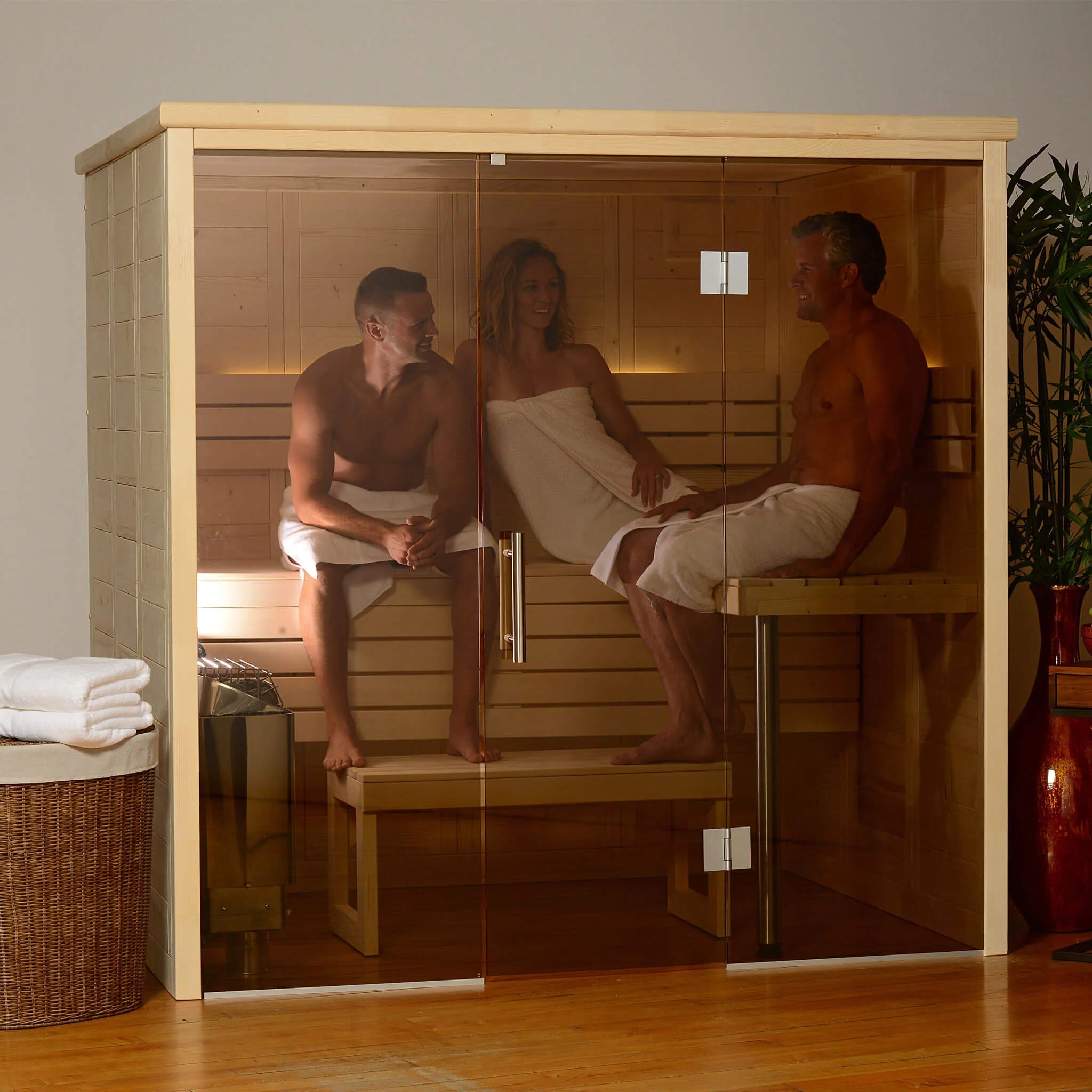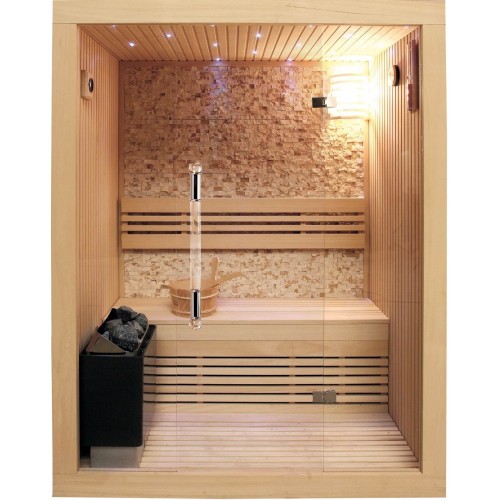Some Known Details About Traditional Sauna
Some Known Details About Traditional Sauna
Blog Article
The Traditional Sauna PDFs
Table of ContentsThe Single Strategy To Use For Traditional SaunaTraditional Sauna Can Be Fun For AnyoneSome Known Questions About Traditional Sauna.The Traditional Sauna StatementsTraditional Sauna Things To Know Before You Buy
A lot of the weight lost in a sauna is water loss and is re-gained upon rehydrating. Without a doubt sauna can be an essential part of a healthy weight loss program. To consider the differences between standard and IR saunas, I will separate these right into verifiable, academic, and made differences.Thus, the best factor in the saunawhich goes to the ceiling directly over the sauna heateris normally between 185 and 190 F. Claims that a conventional sauna surpasses 200 F is simply not real and not appropriate for electric saunas marketed in the United States. The temperature for a far-infrared sauna is normally set between 120 and 140 F; nonetheless, unlike the conventional sauna, the goal in and IR space is not to accomplish a high temperature.
As a result of this, the temperature level difference is virtually pointless, since excessive sweating results in both sauna types, yet the method of warming the body is various. In an IR sauna the bather will really feel warm and will sweat profusely, however at much reduced temperatures (Traditional Sauna). Hence, if the goal is to invest longer amount of times in the sauna, the IR sauna is a great selection
When a conventional sauna has been properly heated up, the sauna wall surfaces are warm, the air temperature has actually accomplished established temperature and the rocks are incredibly warmed. As a fascinating side note, the warmed wall surfaces and the rocks are producing far-infrared warm, incorporated with the heated air, to produce an "enveloping heat".
Not known Details About Traditional Sauna

When the heat is attained, the aspects cycle on and off to maintain the heat. The majority of typical sauna customers appreciate pouring water over the rocks to develop heavy steam to raise sauna moisture degrees. The benefits of pouring water over the rocks consist of: making the space a lot more comfortable, dampening the nasal flows, and allowing the usage of aromatherapy by mixing important oils with the water.

When the energy goes into the body, Web Site it creates the body temperature level to enhance and ultimately causes sweating. In an infrared sauna it's important for the emitters/heaters to continue to be on virtually frequently. Considering that there is no mass of rocks to retain warmth, the sauna will certainly cool down if the emitters shut off.
As mentioned over, the sauna bather in an infrared space intends to position himself before operating click for more emitters to get maximum advantage from the warm. The heating time look at here for both rooms can be very different, depending upon just how the spaces are made use of. For a traditional sauna, a bather should enable 30-40 mins for the space to attain a desired temperature level and to correctly pre-heat the rocks.
Some Ideas on Traditional Sauna You Need To Know
A well constructed sauna will commonly accomplish a temperature level of 150-160 F in concerning 30-40 minutes. For hotter temperature levels, the area may need to heat for a longer period.

Typical saunas tend to be bigger (thus use even more electrical power) than infrared saunas, although traditional saunas are definitely available in one and two person sizes also. For a two-person typical sauna, 5x6 or 5x7 dimension is most preferred. The top bench can easily seat two or three individuals and is also enough time to rest throughout the sauna session.
What Does Traditional Sauna Do?
The ordinary cost per kWH of electrical energy in the united state is roughly $0.11, so a 4.5 kW heating system will certainly set you back about $.50 to compete one hour, if the heater runs continuously for one hour. Generally a sauna heating unit will compete 75% of the first hour and 50% of succeeding hours on given that the components cycle once the set temperature is accomplished.

There is a rarely gone over difference in the social experience between the two areas. While our culture has shed some of the social advantage of the typical sauna experience, it can be really socially rewarding (Traditional Sauna). From family members time in the sauna, to heart-felt conversations with loved ones, to sauna partiesthe traditional sauna experience can bring about intimate interacting socially
Traditional Sauna Things To Know Before You Get This
Many higher end infrared spaces consist of colored light treatment, sound systems and full-glass fronts.
Report this page